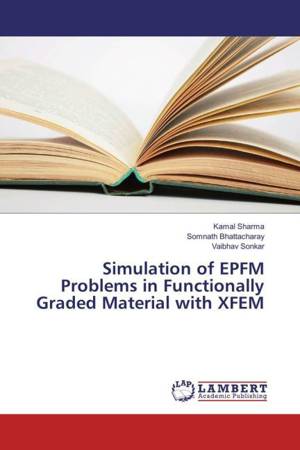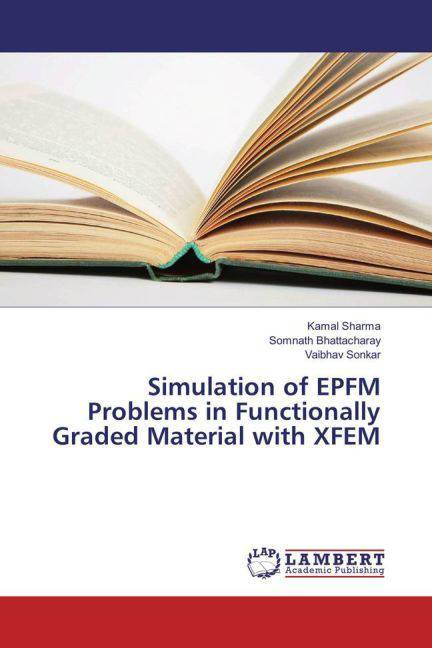
- Afhalen na 1 uur in een winkel met voorraad
- Gratis thuislevering in België vanaf € 30
- Ruim aanbod met 7 miljoen producten
- Afhalen na 1 uur in een winkel met voorraad
- Gratis thuislevering in België vanaf € 30
- Ruim aanbod met 7 miljoen producten
Zoeken
Simulation of EPFM Problems in Functionally Graded Material with XFEM
Kamal Sharma, Somnath Bhattacharay, Vaibhav Sonkar
Paperback | Engels
€ 35,45
+ 70 punten
Omschrijving
The analysis of static crack and its growth is important issue as to ensure reliability and to avoid catastrophic consequences which leads to the loss of life in case of many industrial applications since most of the failures start from the crack. In this work, XFEM has been used to simulate the fatigue crack growth problems in FGM in the presence of hole, inclusion and minor crack under plastic and plane stress conditions. XFEM technique allows mesh independent crack modelling, and avoids remeshing while crack growth. To model a crack in XFEM, standard FE approximation is enriched with some functions, which are obtained from the theoretical background of the problem. The level set method is used to track a moving discontinuity. The validity of LEFM theory is limited to the brittle materials. Therefore, the EPFM theory needs to be utilized to characterize the plastic behaviour of the material. A generalized Ramberg-Osgood material model has been used to model the stress-strain behaviour of the material. Plasticity has been checked by Von Mises Yield criteria. J- integral has been used to calculate the SIF. Crack growth direction is determined by maximum principal stress criteria.
Specificaties
Betrokkenen
- Auteur(s):
- Uitgeverij:
Inhoud
- Aantal bladzijden:
- 84
- Taal:
- Engels
Eigenschappen
- Productcode (EAN):
- 9783659922855
- Uitvoering:
- Paperback
- Afmetingen:
- 150 mm x 220 mm

Alleen bij Standaard Boekhandel
+ 70 punten op je klantenkaart van Standaard Boekhandel
Beoordelingen
We publiceren alleen reviews die voldoen aan de voorwaarden voor reviews. Bekijk onze voorwaarden voor reviews.








